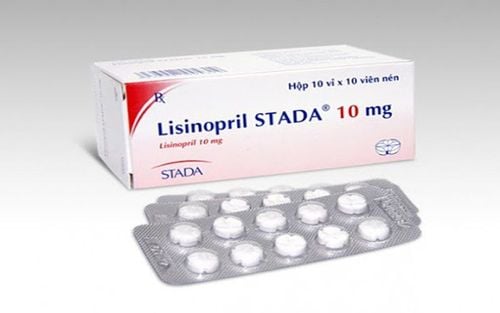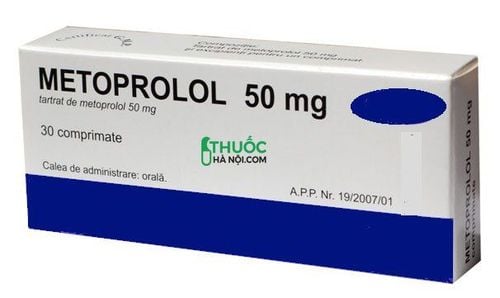This is an automatically translated article.
Posted by Doctor Dao Kim Phuong - Department of Examination - Vinmec Times City International Hospital
Genetic mutations associated with abnormalities in cardiac repolarization lead to prolongation of the QT interval on the electrocardiogram, also known as congenital long QT syndrome. Patients with congenital long QT syndrome are at increased risk of ventricular arrhythmias and sudden death.
1. Overview
The most frequent mutations occur in genes encoding potassium and sodium ion channels in the heart.
Patients with congenital long QT syndrome may be asymptomatic or present with palpitations, syncope, or cardiac arrest.
Congenital long QT syndrome is also known under many names: LQTS (Long QT Syndrome); Romano-Ward syndrome; Jervell and Lange-Nielsen syndrome; Timothy syndrome; Andersen-Tawil.

2.Diagnosis
Suspect the diagnosis with an abnormal electrocardiogram (ECG) obtained at rest showing heart rate-corrected QT interval (QTc):
> 0.46 s in women > 0.45 s in men History Patient and family suspected of having the disease.
Approximately 25% of genotype-positive patients have a normal QT interval and the clinical diagnosis requires additional:
Schwartz Score
| Đặc điểm điện tim | Điểm |
|
QTc (tính theo công thức Bazett) + ≥ 480 ms + 460 – 470 ms + 450 ms và ở giới nam |
3 2 1 |
| QTc ở phút thứ 4 giai đoạn hồi phục khi làm trắc nghiệm gắng sức ≥ 480 ms | 1 |
| Xoắn đỉnh | 2 |
| Sóng T luân chuyển | 1 |
| Sóng T có khấc ở 3 chuyển đạo | 1 |
| Tần số tim theo tuổi thấp (trẻ em). Tần số tim thấp dưới bách phân vị thứ 2 theo tuổi | 0.5 |
| Bệnh sử lâm sàng | |
|
Ngất (không tính điểm cho đồng thời ngất và xoắn đỉnh) + Có stress + Không có stress |
2 1 |
| Điếc bẩm sinh | 0.5 |
| Tiền sử gia đình | |
| Thành viên khác trong gia đình được chẩn đoán xác định có hội chứng QT dài | 1 |
| Có thành viên trong gia đình đột tử (trước tuổi 30) | 0.5 |
Genetic testing to identify mutations
Long QT syndrome 1 - LQTS1: 25-30% of cases are associated with mutations in the KCNQ1 gene, early-onset wide-bottom T wave ECG. Long QT syndrome 2 - LQTS2: 35-40% of cases are related to KCNH2 gene mutations, ECG has 2 peaks and low amplitude T waves. Long QT syndrome 3 - LQTS3: associated with mutations in the SCN5A gene, ECG has isoelectric ST prolongation with T wave appearing late.

3. Disease management
General approach to risk-based treatment for first cardiac event before age 40. Treatment is not necessary in very low-risk patients (such as elderly mutation carriers with normal QT intervals) but these patients should avoid drugs to prolong the QT interval (Strong recommendation). . Patients at moderate or low risk can be managed medically and monitored over time for persistent symptoms. Treat high-risk patients (such as those in cardiac arrest or with multiple episodes of syncope) with a defibrillator and beta-blocker to prevent future arrhythmias ( Strong recommendation). Lifestyle changes:
Advise all patients to avoid QT-prolonging drugs (Strong recommendation). Refer the patient to a cardiologist for risk assessment of participating in competitive sports or advise the patient to avoid genotype-specific triggers for arrhythmias (Strong recommendation). Patients with long QT syndrome 1 (LQTS1) should avoid intense swimming (Strong recommendation). Patients with long QT syndrome 2 (LQTS2) should avoid exposure to loud noises (Strong recommendation).
Beta-blockers:
Use for all patients with a clinical diagnosis of long QT syndrome (LQTS), asymptomatic patients with a corrected QTc (QTc) 470 milliseconds, and patients with symptoms with syncope or documented ventricular tachycardia/ventricular fibrillation (Strong recommendation). Consider for molecularly diagnosed patients with long QT syndrome (LQTS) and normal QT intervals and asymptomatic patients with a QTc ≤470 milliseconds (Weak recommendation). Suggested dosages include propranolol 2-3 mg/kg/day or nadolol 1-1.5 mg/kg/day. Beta-blockers are reported to reduce cardiac events in patients with long QT syndrome (LQTS). Propranolol and nadolol may be more effective than metoprolol in patients with long QT syndrome 1 and long QT syndrome 2. Sodium channel blockers:
Consider using sodium channel blockers with caution. Although the drug may normalize the QTc interval in patients with long QT syndrome 3 (LQT3), it may also increase the risk of sudden death in patients with overlapping Brugada syndrome. Consider the addition of an anti-potassium agent in patients with long QT syndrome 2 if serum potassium levels are not maintained with diet or oral potassium supplementation. Implantable Defibrillator (ICD):
Use in patients with long QT syndrome who survive cardiac arrest (Strong recommendation). Do not use in asymptomatic patients with long QT syndrome (LQTS) who have not tried beta-blocker therapy (Strong recommendation). Consider in patients with long QT syndrome who experience syncope and/or ventricular tachycardia while taking adequate doses of beta-blockers (weak recommendation). Consider prevention of sudden cardiac death (SCD) in patients with long QT syndrome with factors possibly associated with a higher risk of cardiac arrest such as long QT syndrome 2 (LQT2) genotype and Long QT 3 (LQT3) (Weak recommendation).

Left-sided sympathetic denervation (LCSD):
Use in patients at high risk for diagnosed human long QT syndrome:
ICD therapy is contraindicated or refused (Strong recommendation), or Beta-blockers ineffective, not tolerated, unacceptable, or contraindicated (Strong recommendation) Consider in patients experiencing dangerous events (such as syncope, torsades de pointes, or cardiac arrest) during during beta-blocker therapy or multiple ICD shocks while taking beta-blockers (weak recommendation).
Pacemakers are sometimes used in combination with an ICD to facilitate the use of beta-blockers at more effective doses.
Follow up later:
Track QTc interval.
For asymptomatic family members:
If they have a long QT interval, especially younger patients, manage with them as if someone had fainted. If they have a normal QT interval and are asymptomatic, but have a positive genetic diagnosis, the need for treatment is uncertain, but may benefit patients with long QT syndrome genotype 1 (LQT1) or a family history of adrenergic receptor-induced cardiac events. To protect cardiovascular health in general and detect early signs of cardiovascular disease, customers can sign up for Cardiovascular Screening Package - Basic Cardiovascular Examination of Vinmec International General Hospital. The examination package helps to detect cardiovascular problems at the earliest through tests and modern imaging methods. The package is for all ages, genders and is especially essential for people with risk factors for cardiovascular disease.
Please dial HOTLINE for more information or register for an appointment HERE. Download MyVinmec app to make appointments faster and to manage your bookings easily.
References
Roden DM. Clinical practice. Long-QT syndrome. N Engl J Med. 2008 Jan 10;358(2):169-76, commentary can be found in N Engl J Med 2008 May 1;358(18):1967 Skinner JR, CSANZ Cardiovascular Genetics Working Group. Guidelines for the diagnosis and management of familial long QT syndrome. Heart Lung Circus. 2007 Feb;16(1):22-4 Brenyo AJ, Huang DT, Aktas MK. Congenital long and short QT syndromes. Cardiology. 2012;122(4):237-47EBSCOhost Full TextPDF Schwartz PJ, Crotti L, Insolia R. Long-QT syndrome: from genetics to management. Circus Arrhythm Electrophysiol. 2012 Aug 1;5(4):868-77 Kallergis EM, Goudis CA, Simantirakis EN, Kochiadakis GE, Vardas PE. Mechanisms, risk factors, and management of acquired long QT syndrome: a comprehensive review. ScientificWorldJournal. 2012;2012:212178EBSCOhost Full Textfull-text Priori SG, Wilde AA, Horie M, et al. HRS/EHRA/APHRS expert consensus statement on the diagnosis and management of patients with inherited primary arrhythmia syndromes: document endorsed by HRS, EHRA, and APHRS in May 2013 and by ACCF, AHA, PACES, and AEPC in June 2013. Heart Rhythm. 2013 Dec;10(12):1932-63 Priori SG, Blomström-Lundqvist C, Mazzanti A, et al. 2015 ESC Guidelines for the management of patients with ventricular arrhythmias and the prevention of sudden cardiac death: The Task Force for the Management of Patients with Ventricular Arrhythmias and the Prevention of Sudden Cardiac Death of the European Society of Cardiology (ESC) Endorsed by: Association for European Paediatric and Congenital Cardiology (AEPC). Eur Heart J. 2015 Nov 1;36(41):2793-867














